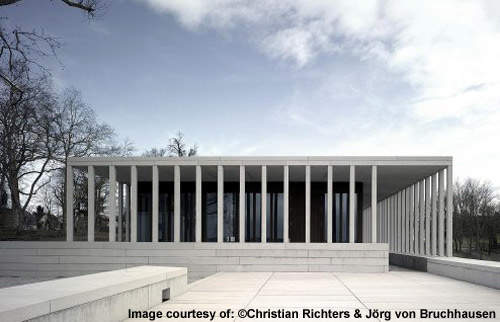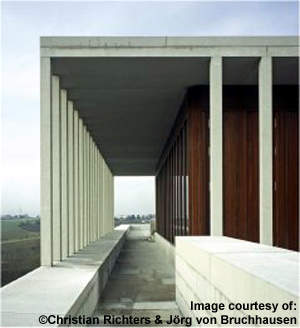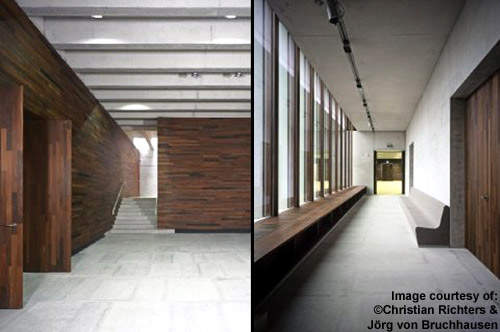The Museum of Modern Literature in Marbach am Neckar, Germany was awarded the prestigious RIBA Stirling Prize in October 2007. Overlooking the valley of the historic Neckar River, affording it panoramic views of the surrounding landscape, it is located in a space of 3,800m² on top of a rocky plateau in Marbach’s scenic park.
The building was designed by David Chipperfield of the eponymous architecture firm, together with Alexander Schwarz, the project architect.
Although justly proud of their award winning building, Schwarz is convinced that Chipperfield’s best building is his own house, a comment that speaks volumes as to the pair’s humanist vision of architecture.
CLASSICAL ARCHITECTURE
Classical influences and features abound in the Museum of Modern Literature, but its architects are also convinced that this is a building characterised by a humanist vision in keeping with the building’s purpose.
The physicality of the building is understated and on a human scale not designed for monumental appearance alone. In keeping with this the language of the building is nautical befitting its positioning above the River Neckar and contains many terraces, balconies and ramps.
Chipperfield said he was interested in the abstract qualities of classical architecture. The architects are not, however, interested in a showy massive construction for its own sake but in a human building designed for purpose, in a quiet clear focused construction from which a physicality and atmosphere can emerge naturally.
MUSEUM OF MODERN ART FEATURES
The museum has an entrance that is located at its highest point allowing visitors to descend into the heart of the building until they reach the traditionally dark timber-panelled exhibition galleries. Here at the very centre of the museum are housed original manuscripts by such luminaries of the literary world as Franz Kafka and Alfred Döblin.
Their respective works, The Trial and Berlin Alexanderplatz are displayed in exhibition galleries which are illuminated by artificial light and environmentally controlled due to the fragility and sensitivity of many of the exhibits. But in keeping with the humanist nature of the project each of these spaces borders on a naturally lit gallery thus contrasting with the artificial nature of the archival and display areas.
The entrance of the building is dug into the hillside almost hidden behind minimal, classically inspired, modestly beautiful colonnades.
Entering from its highest point visitors descend through a pavilion-like interior to reach the exhibition and archival spaces. Passing successively through loggia, foyer and staircase spaces the visitor is prepared for the dark-timbered rooms which house the Museum’s wealth of manuscripts.
BALANCED USE OF MATERIALS
The materials echo the historic Neckar River valley above which the museum is situated. Materials characterised by solidity and tactility echo the natural, yet contradictorily ‘man-made’, environment in which the museum lies.
Fair-faced concrete and, sandblasted reconstituted stone with limestone aggregate and limestone mimic the region’s geological richness. But if these materials feel cold and hard the materials employed for the interiors are warm and yielding. Entire walls made of wood, felt used on the benches placed within the bowels of the building and glass creating interiors which are open and welcoming to the visitors and scholars who use the museum.
The interior and exterior balance each other in this fashion too just as the materials employed inside and outside the building do. The architecture also echoes the past both of antiquity with the façade of the building clearly resembling a Greek temple, and the classic German architecture of more recent times. Similarly, the internal design mirrors and echoes the environment which gives rise to the literary gems at the heart of the museum.










